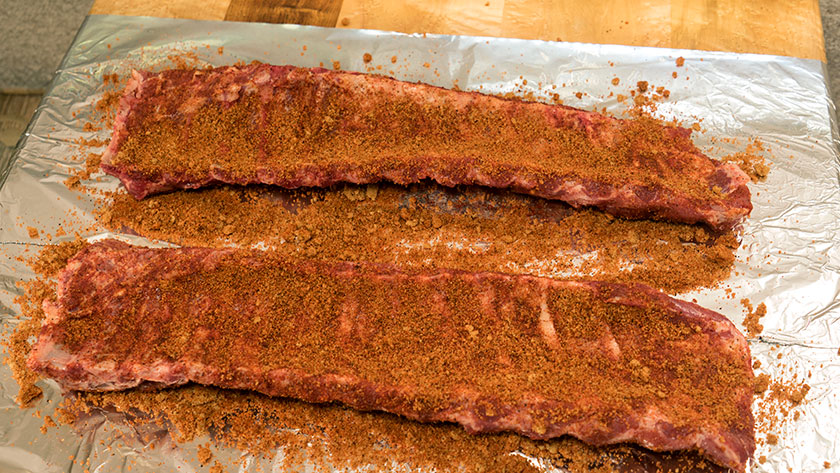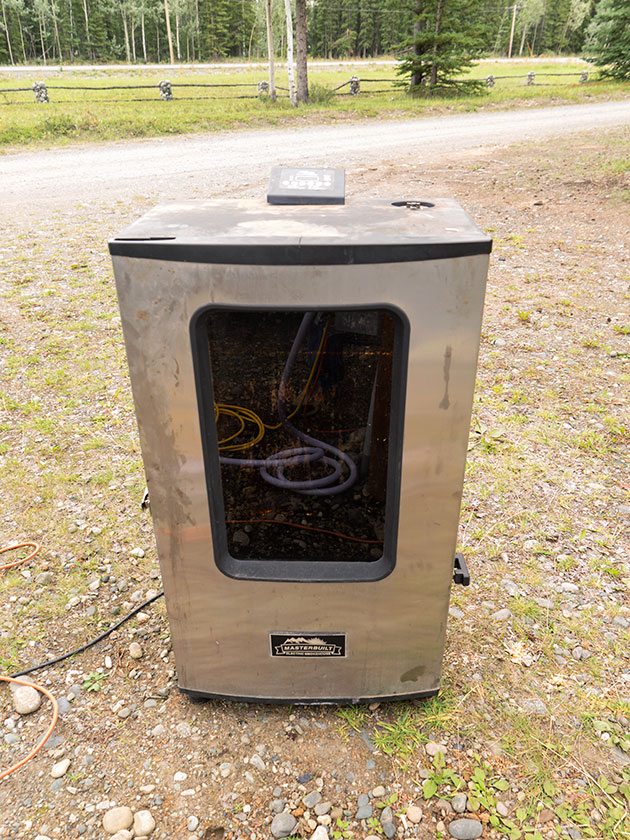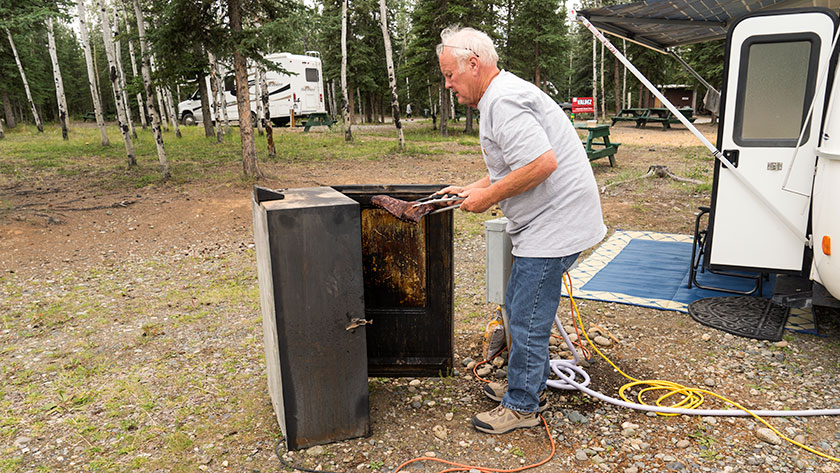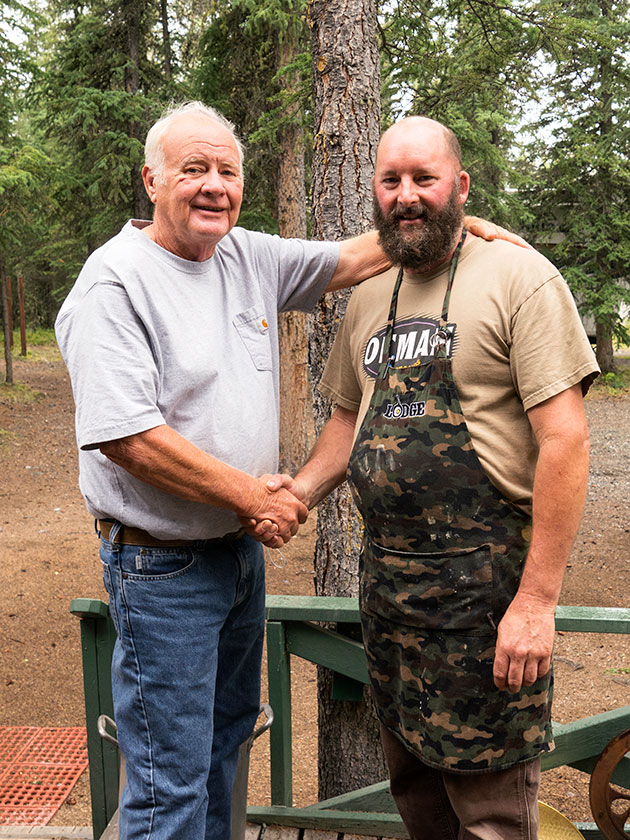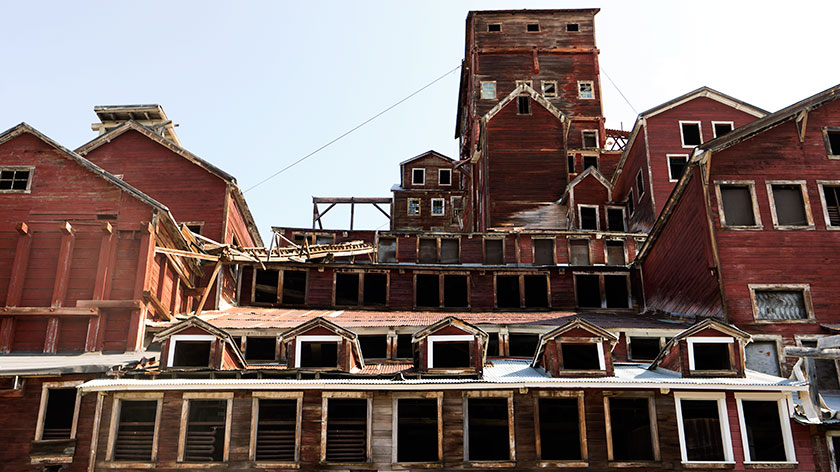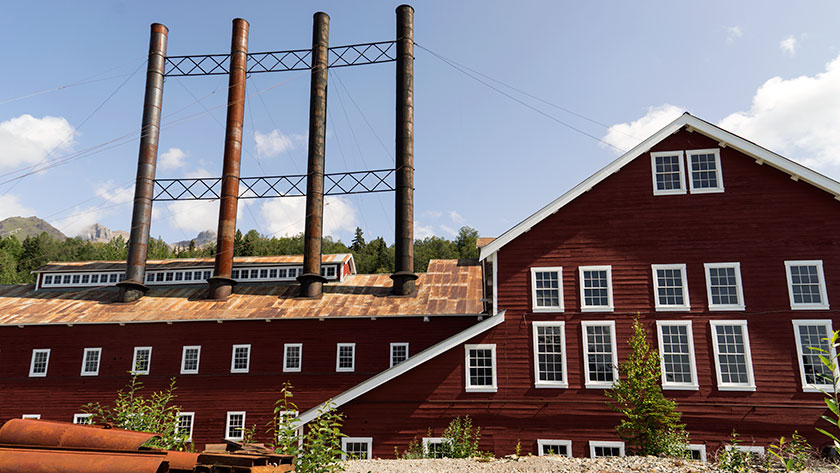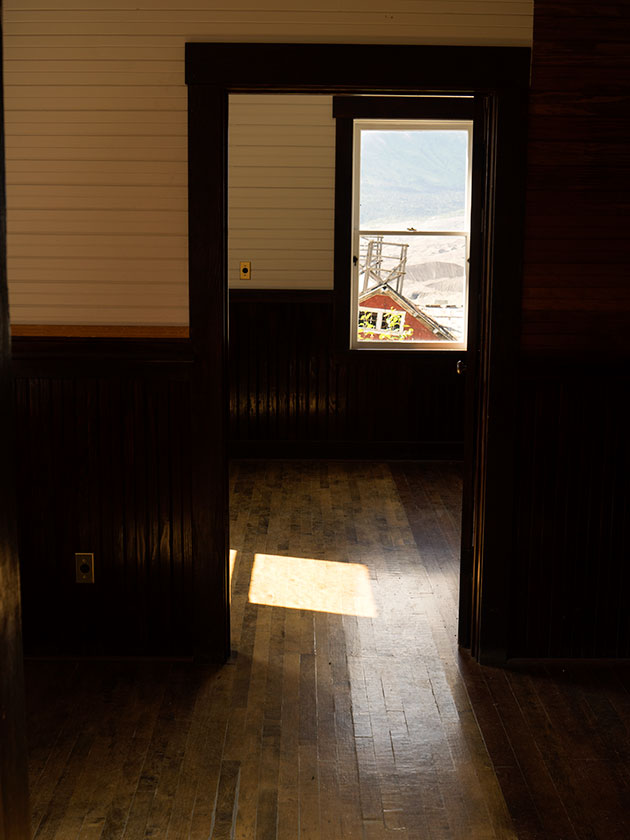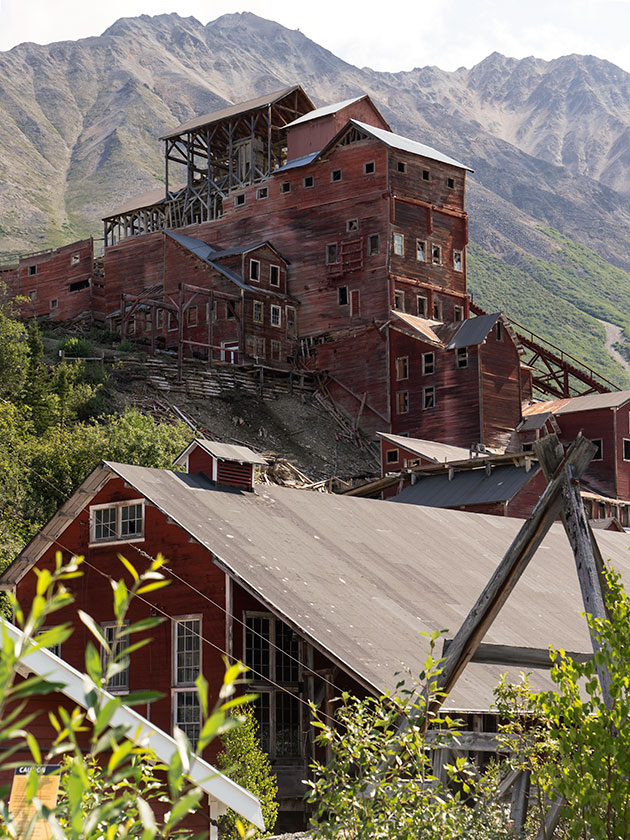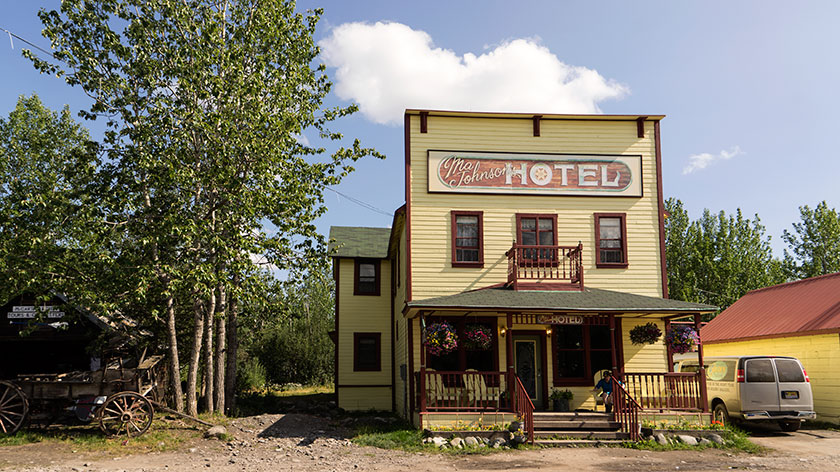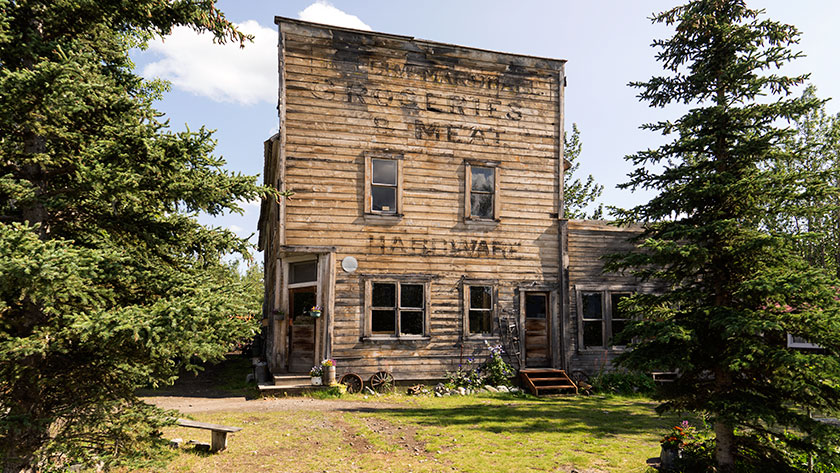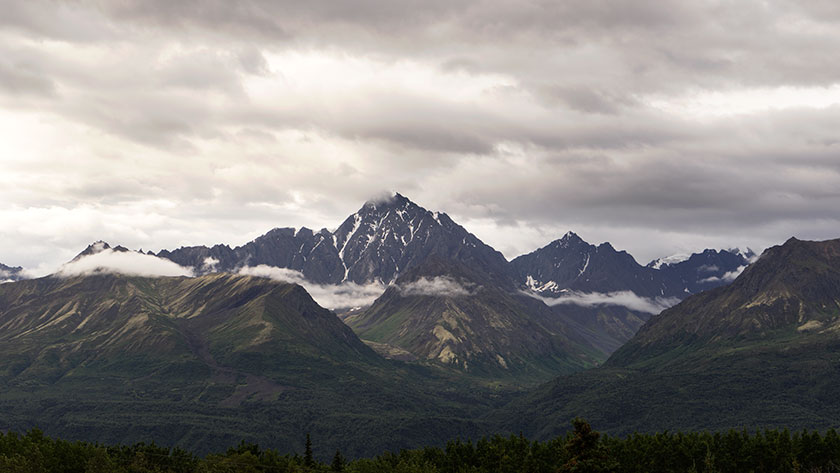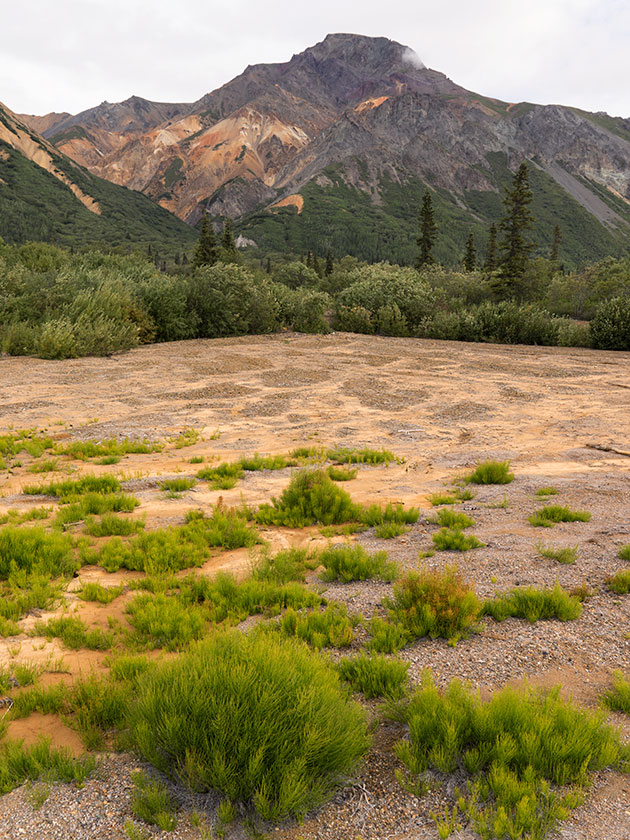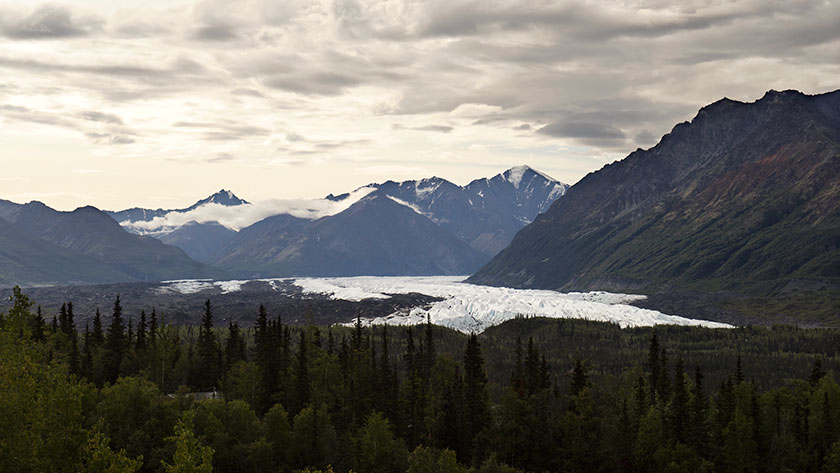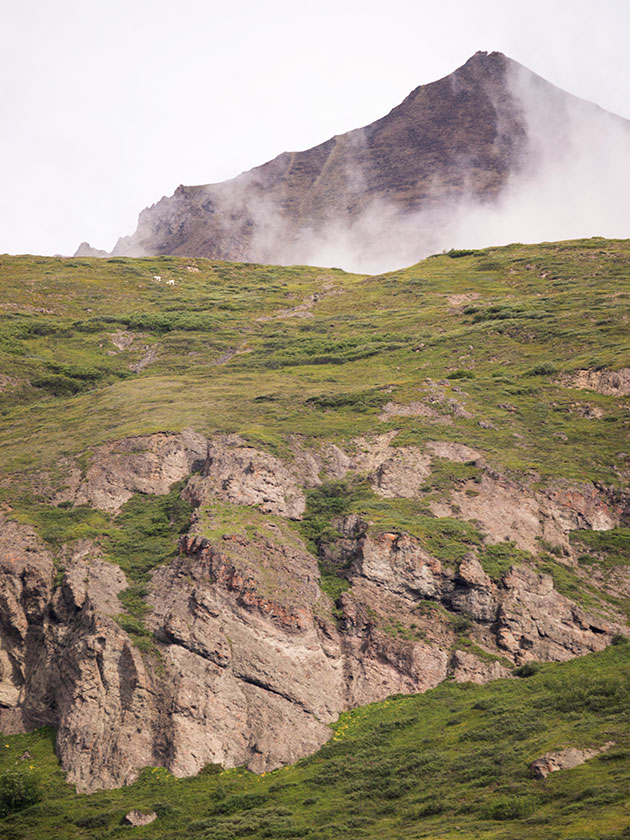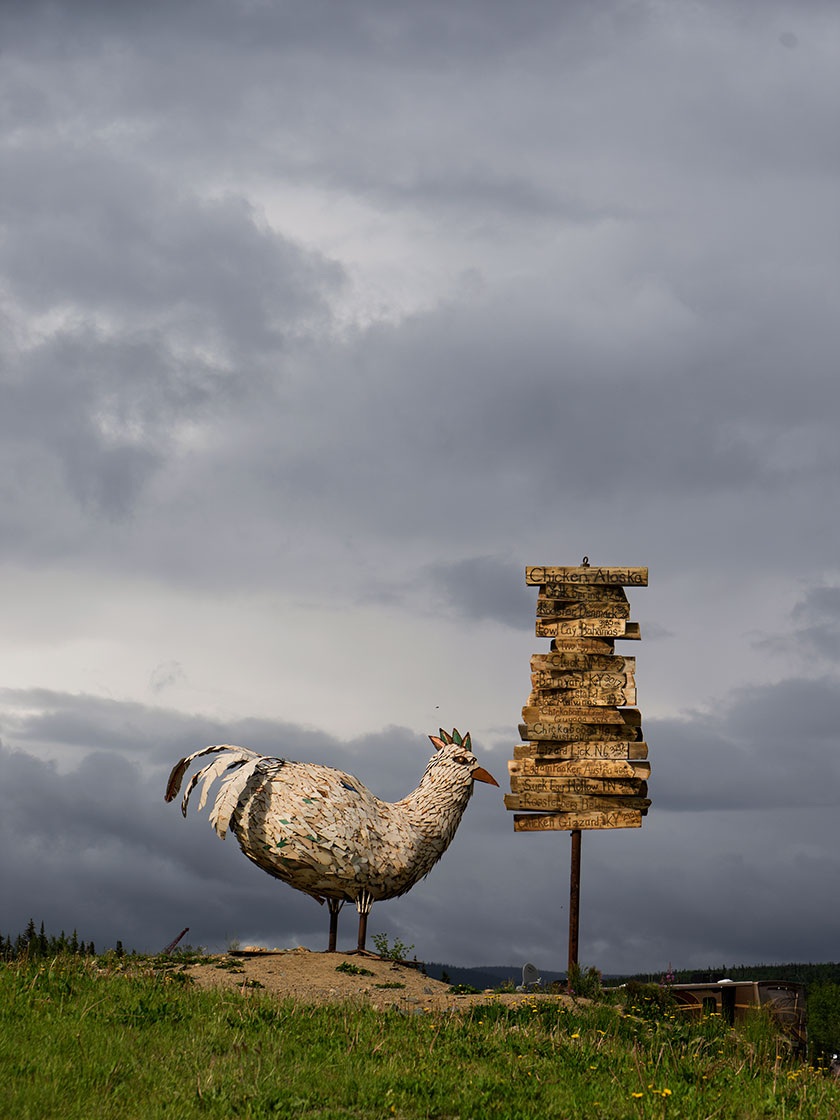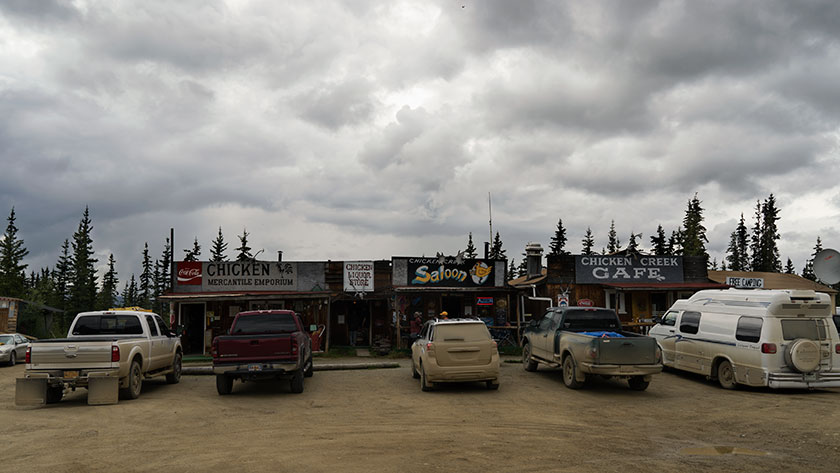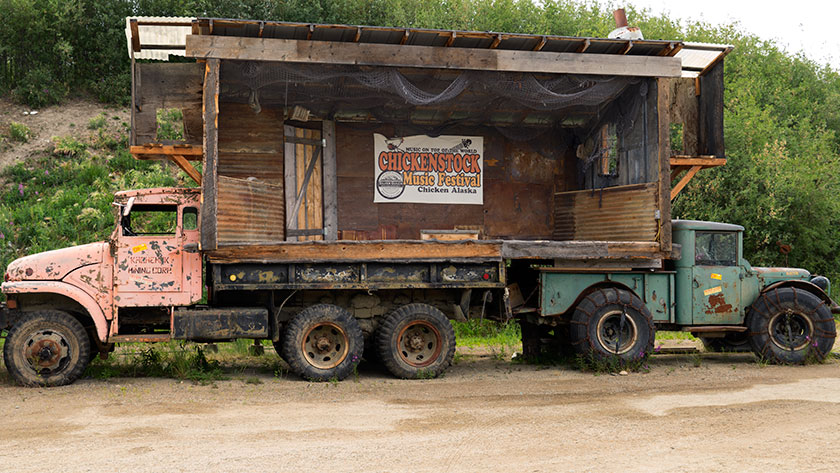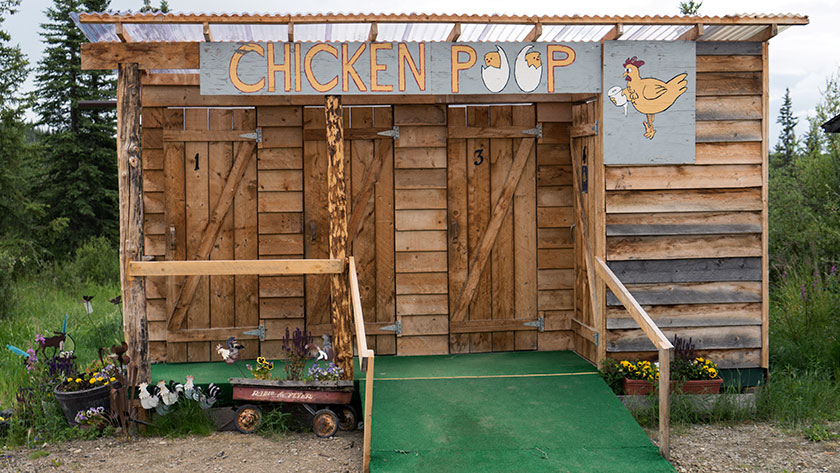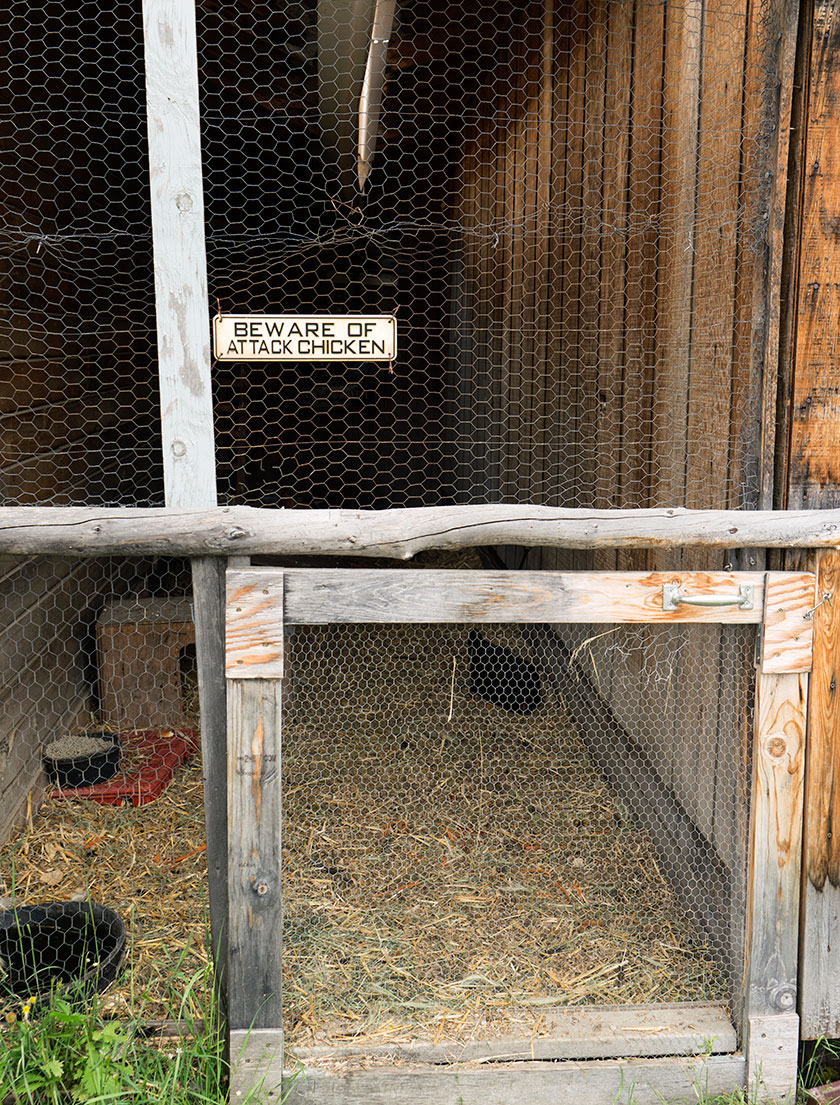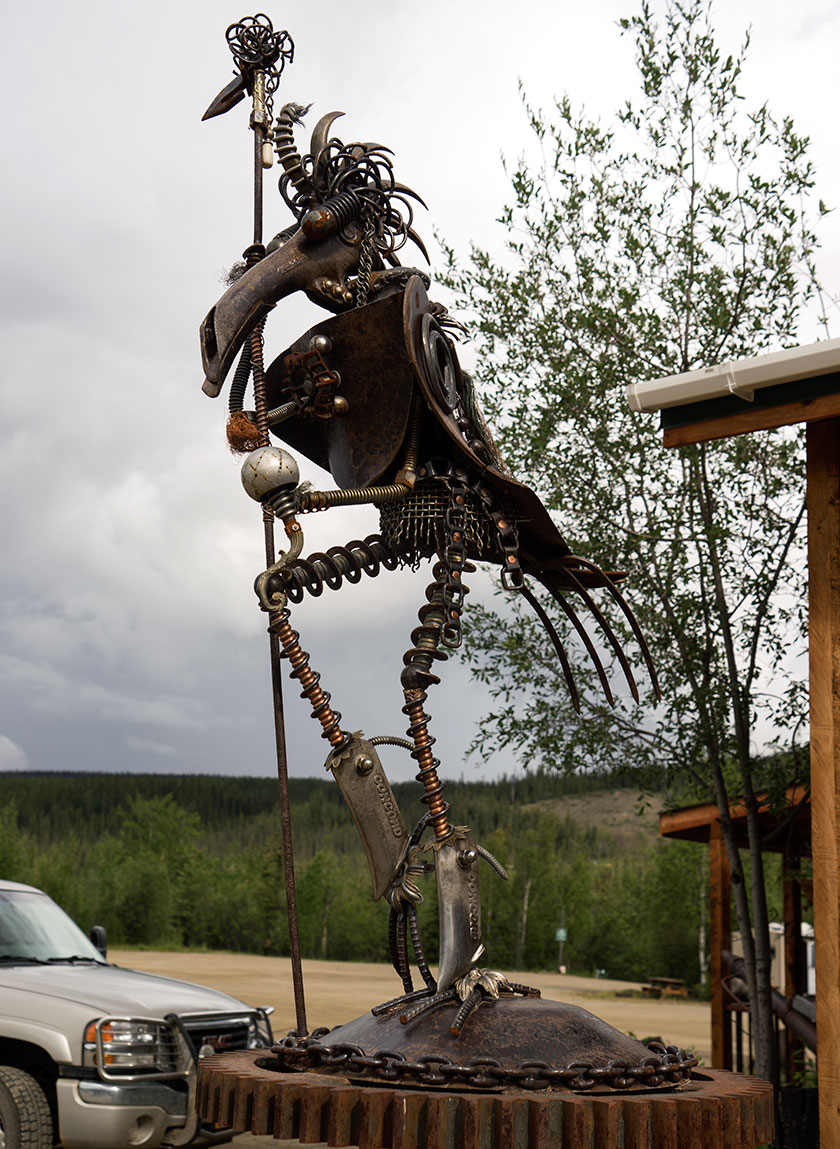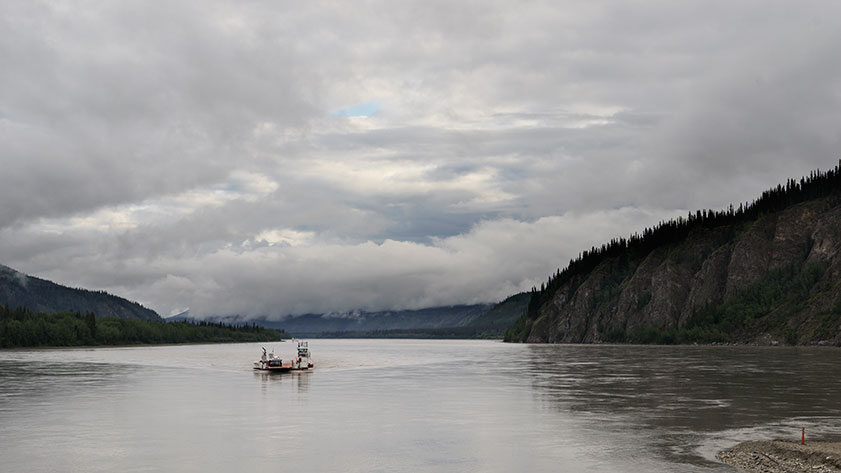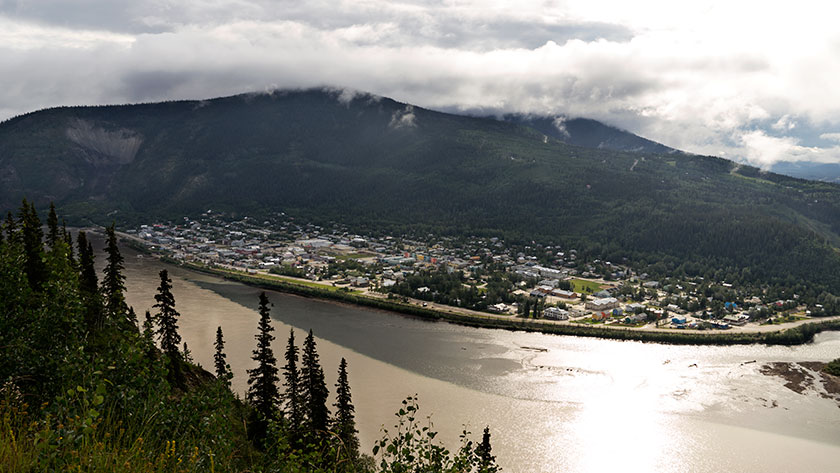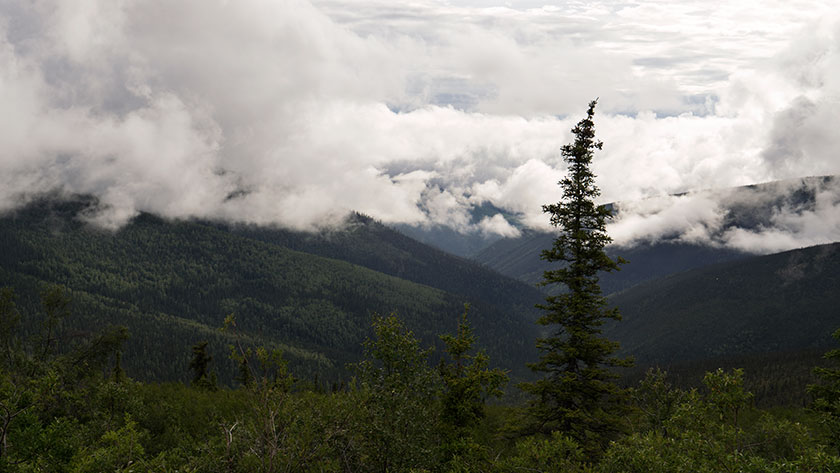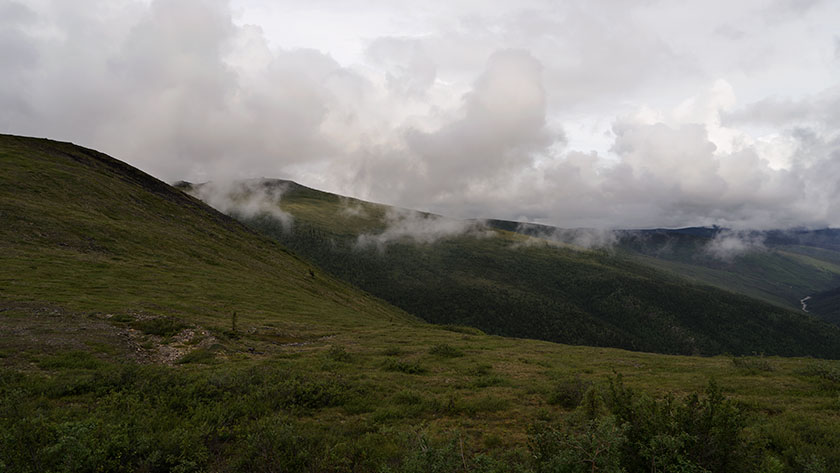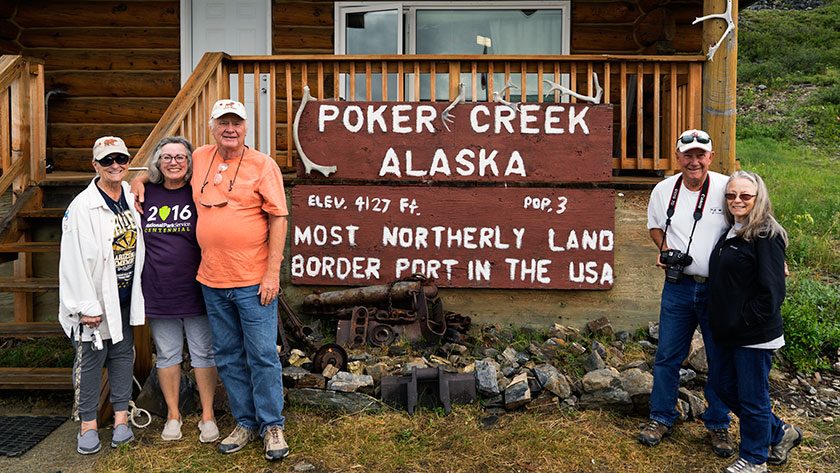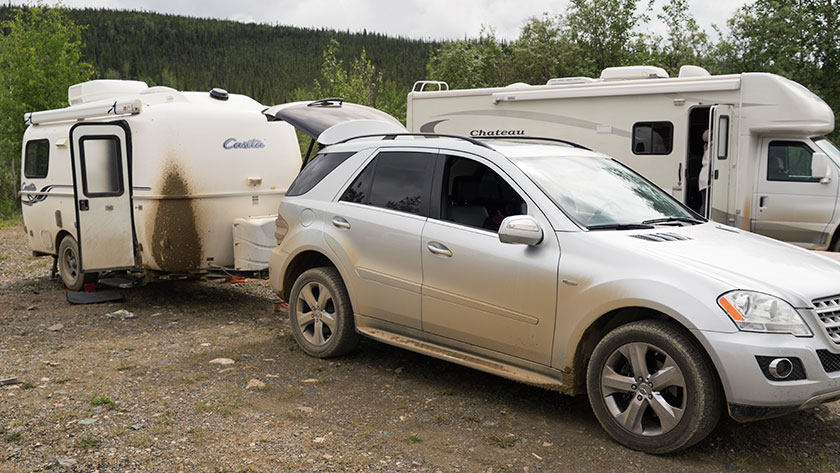Queen Anne and I left the gang behind in Tok two days ago. Since we have different priorities for the trip home, the group figured it would be best for each of us to follow our own routes and time-table. Fred and Deb promised that they would send updates and photos via email so we can follow their adventures too. For example, they made it to Beaver Creek today and by chance, stopped at the same store we had visited yesterday . . . Only they ran into Dudley Do Right.
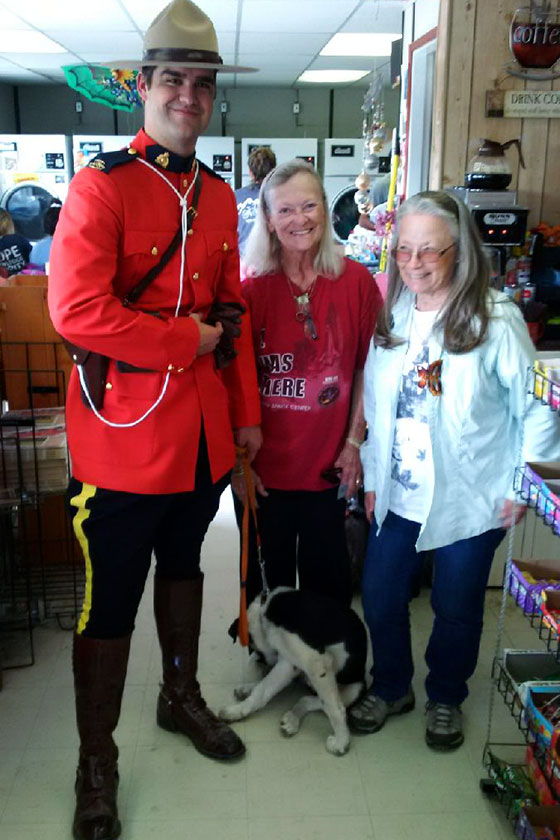
Yesterday’s road was enough to tear the rest of my hair out. After leaving Tok the Alaska Highway gets a bit rough, and I began to hear clunking coming from the trailer hitch. We pulled into a wayside to make sure nothing was wrong. I have a device that clamps the hitch to the receiver and I wanted to make sure it was tight. Since the parking area was on a slant, the first thing I did was to chock the trailer tires. After fiddling with the receiver and hitch, we tightened everything up and connected the Ritz to Fritz. A few miles down the road confirmed that we had fixed the clunk. It wasn’t until we left this morning that I realized that I had driven away from the chocks. Now we have to get a new set.
We were trying to make a campground in Destruction Bay (ominous name, isn’t it). Remember when I bragged about my clean and shiny truck and trailer. Well, between Beaver Creek and Destruction Bay, the Canadians have three construction zones. They never really fix the roads, they just scrape off the surface, pile more dirt in the wallows, then put more gravel and oil on it. That takes all summer. Just to summarize it, there was fifteen miles of wet mud, in the rain where they were fixing the road. By the time we made camp, I didn’t want to touch the car or trailer.
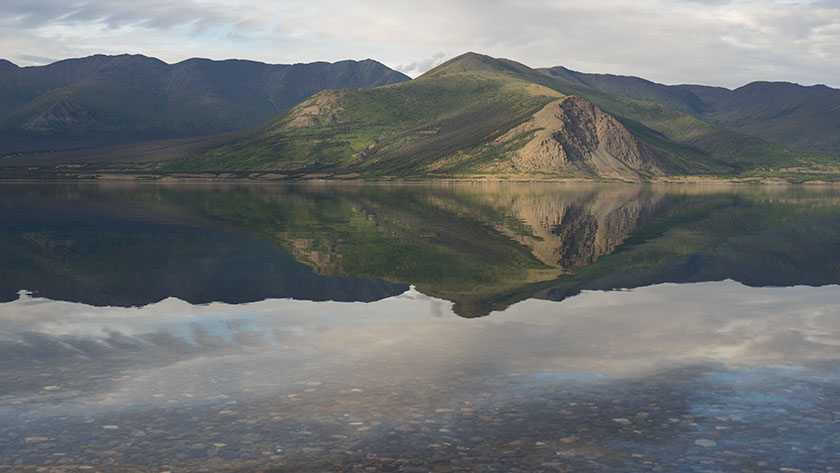
We did camp last night in a Provincial Park campgrounds at Kluane Lake. Our campsite was on the water so we enjoyed the marvelous view and the pair of loons that came by for a visit. Before a breeze picked up, the water was glass smooth. We sat around a campfire for dinner before turning in. As we were leaving a pair of white swans called us down to the shore to show off their signet.
We made Whitehorse by lunch. That’s an important milestone as we now have traveled every mile of the Alaskan Highway. If you remember, we left the highway because we wanted to go through Dawson City, and only God knows why, the town of Chicken. (See previous dirty car rant.)
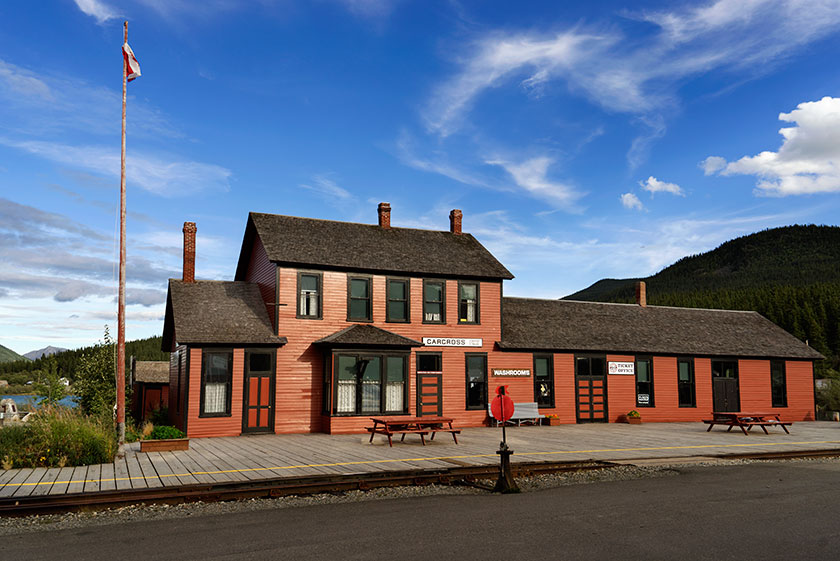
After lunch in Whitehorse, we headed south on the Klondike Trail and we’re camped in an RV park in Carcross. I know, the first thing that went through my mind was it was some car ferry or something, but this is the site where great herds of caribou forged the Yukon River. It sort of changes the way you pronounce the town’s name. It’s a small native village on Bennett Lake, which is one of a series of lakes at the headwaters of the Yukon.
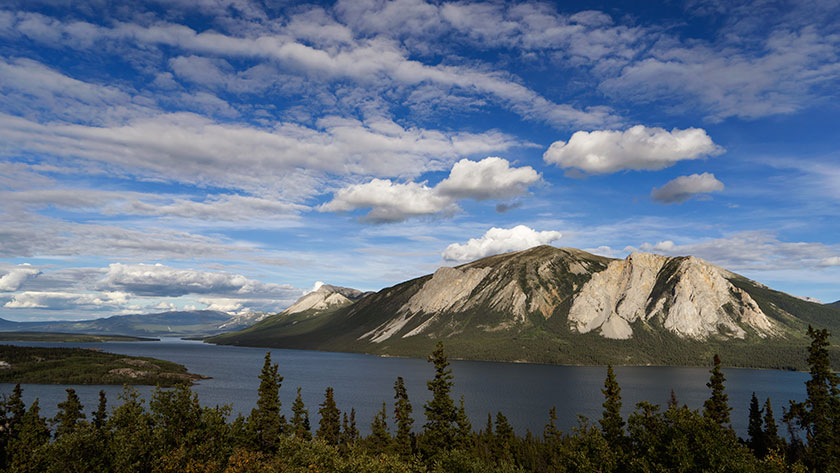
We chose to stay here, because tomorrow we’re going to run into Skagway for a visit. It’s only sixty miles and we can make it down for lunch and back for dinner. I should have a report for you tomorrow.
jw

